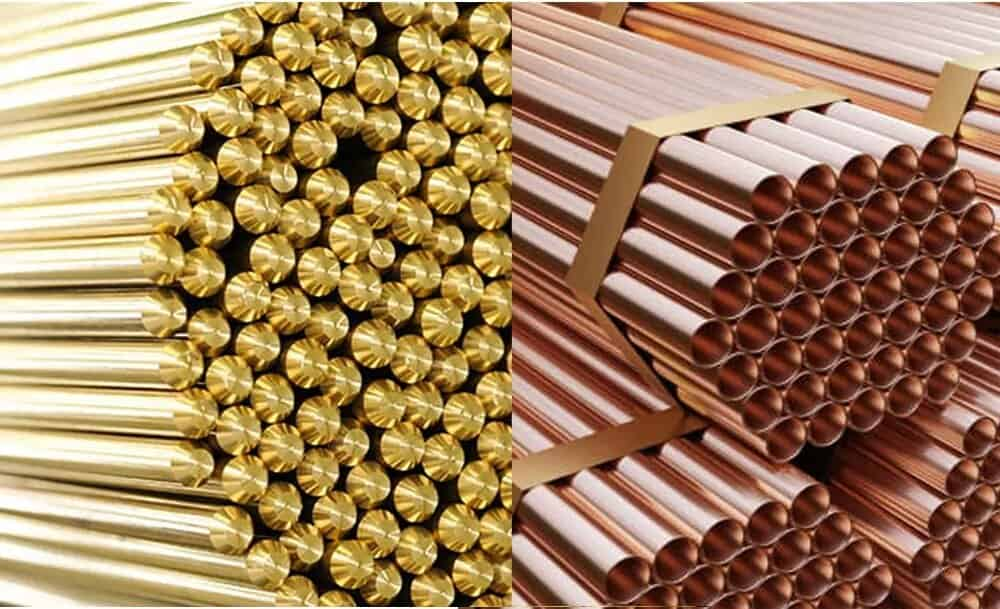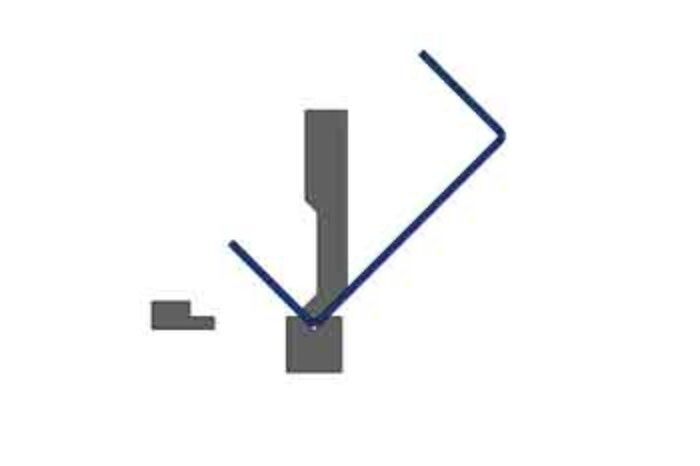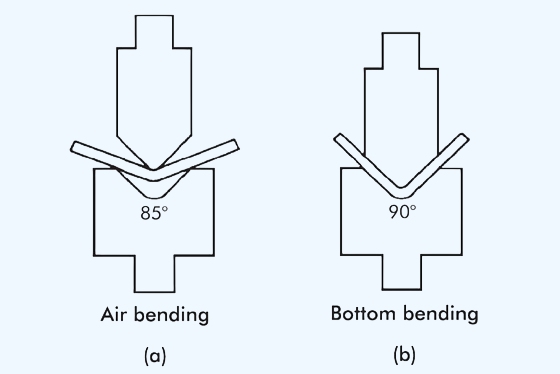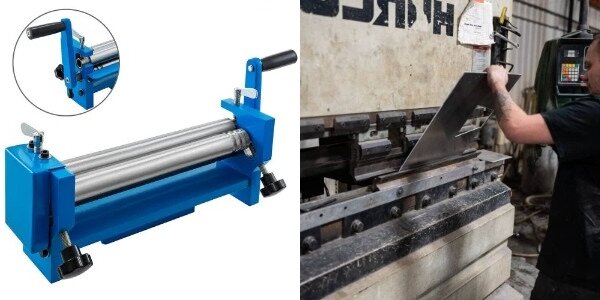Het produceren van metalen onderdelen op maat brengt unieke uitdagingen met zich mee. Elk project vraagt om specifieke materiaaleigenschappen en de keuze tussen rood messing en geel messing stuit zelfs ervaren ingenieurs vaak tegen de borst. Hoewel beide metalen uitstekend te bewerken en corrosiebestendig zijn, hebben hun verschillende eigenschappen invloed op alles, van de kosten tot de uiteindelijke prestaties.
Wil je een weloverwogen beslissing nemen die je tijd en geld kan besparen? Laten we eens kijken hoe deze metalen presteren in echte toepassingen.

Wat is rood messing vs geel messing?
De industrie heeft verschillende messinglegeringen ontwikkeld om te voldoen aan specifieke productiebehoeften. Rood en geel messing zijn twee verschillende varianten die elk unieke eigenschappen hebben op basis van de koper-zinkverhouding.
Wat is rood messing?
Rood messing ontstond toen fabrikanten op zoek gingen naar betere materiaaleigenschappen voor gespecialiseerde toepassingen. Deze koper-zink-tin legering, ook wel gunmetal genoemd, bevat minimaal 85% koper en ongeveer 15% zink. De hoge koperverhouding zorgt voor de karakteristieke roodachtige kleur.
Ondanks de robuuste samenstelling moet rood messing voorzichtig worden toegepast in maritieme omgevingen. Hoewel het zinkgehalte lager is dan bij geel messing, kan het toch reageren met zeewater. Deze reactie kan leiden tot ontzinking, waardoor poreus koper achterblijft. Voor niet-maritieme toepassingen levert rood messing echter uitzonderlijke prestaties en duurzaamheid.
Wat is geel messing?
Geel messing heeft dezelfde basiselementen als rood messing, maar in aanzienlijk andere verhoudingen. Deze legering bevat tot 65% koper en ongeveer 35% zink - het drievoudige van het zinkgehalte van rood messing. Het verhoogde zinkgehalte verandert het uiterlijk van het metaal van roodachtig naar geel.
Het hogere zinkgehalte zorgt voor een uitstekende elasticiteit, vervormbaarheid en smeedbaarheid. Deze eigenschappen maken geel messing bijzonder geschikt voor bewerkingsprocessen, zoals CNC-bewerkingen. Het verhoogde zinkgehalte maakt het echter gevoeliger voor corrosie dan zijn rode tegenhanger.
Chemische samenstelling van rood messing versus geel messing
Rood messing heeft een heel andere samenstelling dan zijn gele tegenhanger. De kritieke factor ligt in de koper-zinkverhouding, die het gedrag tijdens de productie en de prestaties bij het eindgebruik bepaalt.
De tabel hieronder laat de verschillen in hun chemische inhoud zien.
| Chemische eigenschappen | Messing rood (%) | Geel messing (%) |
|---|---|---|
| Koper | 85-90% | 60-80 |
| Zink | 5-10% | 30-40% |
| Tin | 2 min | 1 max. |
| Lood | 1 max. | 1 max. |
| IJzer | 0.1 | 0.1 |
| Mangaan | 0.5 | 0.5 |
| Arsenicum | 0,01 max | 0,01 max |
Fysische eigenschappen
Elk type messing heeft verschillende fysieke eigenschappen die de selectie voor specifieke toepassingen beïnvloeden. Deze verschillen komen voort uit de unieke chemische samenstelling.
Kleur en uiterlijk
Door het hoge kopergehalte heeft rood messing een warme, roodbruine kleur. Na verloop van tijd krijgt het oppervlak een rijke patina, wordt het iets donkerder maar behoudt het zijn aantrekkelijke esthetiek.
Geel messing heeft een heldere, gouden kleur die velen associëren met traditioneel messing. Het hogere zinkgehalte zorgt voor dit lichtere uiterlijk, waardoor het populair is voor decoratieve elementen.
Dichtheid en gewicht
Rood messing weegt ongeveer 8,7 gram per kubieke centimeter. De hogere dichtheid komt door het hogere kopergehalte.
Geel messing weegt ongeveer 8,4 gram per kubieke centimeter. De lagere dichtheid komt doordat zink lichter is dan koper, waardoor het een iets lichtere optie is voor gewichtsgevoelige projecten.
Smeltpunten
Rood messing smelt bij ongeveer 1.900°F (1.038°C), wat hoger is door de hogere koperverhouding. Geel messing wordt vloeibaar bij een lagere temperatuur - ongeveer 932°C.
Geleidbaarheid
Rood messing geleidt elektriciteit beter dan geel messing. Het geleidingsvermogen is ongeveer 28% IACS (International Annealed Copper Standard), terwijl geel messing ongeveer 26% IACS geleidt.
Warmtegeleidbaarheid
Rood messing geleidt warmte efficiënter dan geel messing. Rood messing geleidt ongeveer 92 BTU/(hr-ft²-°F/inch). Geel messing geleidt ongeveer 70 BTU/(hr-ft²-°F/inch).
Mechanische eigenschappen
De mechanische eigenschappen van rood en geel messing bepalen hun geschiktheid voor verschillende productieprocessen en toepassingen. Hun verschillende eigenschappen beïnvloeden alles, van productiemethoden tot prestaties op lange termijn.
Kracht en duurzaamheid
Rood messing heeft een superieure treksterkte en bereikt tot 50.000 PSI in zijn standaardvorm. Het hogere kopergehalte zorgt voor een betere weerstand tegen vermoeiing en hardheid. Dit metaal behoudt zijn eigenschappen goed onder stress en herhaalde belasting.
Geel messing heeft een iets lagere treksterkte van ongeveer 43.000 PSI. Dit wordt echter gecompenseerd door een betere vervormbaarheid. Het metaal reageert goed op koudvervormen, waardoor de sterkte aanzienlijk kan toenemen.
Corrosiebestendigheid
Rood messing onderscheidt zich in corrosiebestendigheid. Het hogere kopergehalte zorgt voor een betere bescherming tegen ontzinking - een standaardprobleem bij messing onderdelen die aan water worden blootgesteld.
Geel messing is matig corrosiebestendig. Hoewel dit geschikt is voor veel toepassingen, vereist het meer aandacht in ruwe omgevingen.
Bewerkbaarheid en bewerkbaarheid
Rood messing bewerkt voorspelbaar en maakt zuivere sneden. Het materiaal reageert goed op standaard gereedschap en behoudt strakke toleranties. De hogere sterkte vereist echter meer kracht tijdens de bewerking.
Geel messing blinkt uit in bewerkbaarheid. Het hogere zinkgehalte verbetert de spaanvorming en vermindert de slijtage van het gereedschap.
Rood messing versus geel messing: Verschil in kosten
Grondstofkosten spelen een belangrijke rol bij de metaalkeuze. Het prijsverschil tussen rood en geel messing beïnvloedt de initiële investering en de waarde op lange termijn.
Rood messing kost meer door het hogere kopergehalte. De huidige marktprijzen liggen ruwweg 30-40% boven geel messing. De prijsstabiliteit van rood messing volgt de trends op de kopermarkt op de voet.
Geel messing is een budgetvriendelijkere optie. Het hogere zinkgehalte - ongeveer 35% - helpt de materiaalkosten aanzienlijk te verlagen. Marktschommelingen in de zinkprijs hebben minder invloed op geel messing dan de koperprijs op rood messing.
Toepassingen rood messing vs geel messing
Elk type messing vervult specifieke functies in verschillende industrieën. Door hun verschillende eigenschappen passen ze perfect bij verschillende toepassingen in productie en ontwerp.
Rood Messing Toepassingen:
Scheepsuitrusting
- Bootbeslag en hardware
- Onderdelen voor onderwaterkleppen
- Schroefassen
- Hardware voor scheepsdek
Sanitaire systemen
- Hoogwaardige waterkleppen
- Warm water fittingen
- Stoompijpen
- Drukregelaars
Buitenarchitectuur
- Decoratieve leuningen
- Lichtarmaturen
- Deurgrepen
- Aan weer en wind blootgestelde bekleding
- Monument plaquettes
Geel messing Toepassingen:
Elektrische onderdelen
- Aansluitklemmen
- Onderdelen schakelaar
- Aansluitingen
- Zekeringhouders
Muziekinstrumenten
- Koperinstrumenten
- Kleppen en geleiders
- Mondstukken
- Afstemmechanismen
Hardware voor binnen
- Onderdelen slot
- Deurknoppen
- Kast hardware
- Lamparmaturen
- Meubelafwerking
Vergelijkingstabel Rood Messing vs Geel Messing
| Functie | Rood messing | Geel messing |
|---|---|---|
| Kleur | Roodbruin | Goudgeel |
| Dichtheid | 8,7 g/cm³ | 8,4 g/cm³ |
| Smeltpunt | 1.900°F (1.038°C) | 1.710°F (932°C) |
| Elektrische geleidbaarheid | 28% IACS | 26% IACS |
| Warmtegeleidbaarheid | 92 BTU/(hr-ft²-°F/inch) | 70 BTU/(hr-ft²-°F/inch) |
| Treksterkte | Tot 50.000 PSI | Tot 43.000 PSI |
| Corrosiebestendigheid | Superieur | Matig |
| Bewerkbaarheid | Goed | Uitstekend |
| Verwerkbaarheid | Matig | Hoog |
| Kosten grondstoffen | 30-40% hoger | Zuiniger |
| Langetermijnwaarde | Betere duurzaamheid, minder vervanging | Heeft mogelijk meer onderhoud nodig |
| Beste toepassingen | Mariene omgevingen, sanitaire systemen, kritieke onderdelen | Decoratieve stukken, massaproductie, ingewikkelde vormen |
Rood messing versus geel messing: Welke moet ik kiezen?
De keuze tussen rood en geel messing moet afgestemd zijn op de behoeften van je project. Verschillende belangrijke factoren bepalen dit beslissingsproces.
Als corrosiebestendigheid een topprioriteit is, kies dan voor rood messing. Het hogere kopergehalte maakt het de superieure keuze voor scheepsuitrusting, loodgietersonderdelen en buitenarmaturen.
Kies geel messing voor grote productieseries waarbij de kosten van belang zijn. De betere bewerkbaarheid versnelt de productie en vermindert slijtage van gereedschap.
Budgettaire beperkingen beïnvloeden vaak de uiteindelijke beslissing. Hoewel geel messing in eerste instantie minder kost, moet je rekening houden met de levensduur van je product. Rood messing is misschien duurder, maar vereist minder onderhoud en minder vervangingen.
Je keuze heeft ook invloed op de productiemethode. Geel messing vloeit beter bij het gieten en reageert goed op koudvervorming. Rood messing geeft betere resultaten bij toepassingen waarbij schroefdraad of mechanische assemblage nodig is.
Conclusie
De keuze van het metaal heeft een directe invloed op het succes van je project. Rood messing is weliswaar duurder, maar schittert in toepassingen die sterkte en corrosiebestendigheid vereisen. Geel messing biedt kosteneffectieve oplossingen voor hoog-volume productie en decoratieve stukken. Baseer je keuze op de specifieke eisen van je toepassing, het productieproces en je budget.
Heb je een betrouwbare fabrikant van plaatwerkonderdelen nodig? Dan bent u bij Shengen aan het juiste adres. Wij zijn gespecialiseerd in lasersnijden, buigen, oppervlakte-afwerking en CNC-verspaning van plaatmetaal. Neem contact op met Shengen Vandaag nog en zoek hulp bij professionals!
FAQs
Welke messing is beter voor sanitairtoepassingen?
Rood messing is toonaangevend in sanitairsystemen. Het hogere kopergehalte zorgt voor een superieure weerstand tegen ontzinking en corrosie bij blootstelling aan water. Dit metaal behoudt zijn integriteit in zowel warm- als koudwatersystemen. Het heeft zich in de sanitairbranche al tientallen jaren bewezen, vooral in gebieden met agressieve wateromstandigheden.
Kan rood messing worden gebruikt in elektrische onderdelen?
Rood messing werkt goed in elektrische toepassingen. De geleidbaarheidsklasse 28% IACS maakt het geschikt voor elektrische terminals en connectoren. Het materiaal combineert een goed geleidingsvermogen met mechanische sterkte. Zuiver koper heeft echter de voorkeur als het gaat om maximale geleiding.
Wat is beter, rood messing of geel messing?
Geen van beide messingtypes claimt absolute superioriteit - elk blinkt uit in specifieke toepassingen. Rood messing domineert in corrosieve omgevingen en kritische componenten waar storingen hoge kosten met zich meebrengen. Geel messing is ideaal voor de productie van grote aantallen en ingewikkelde ontwerpen waarbij kostenefficiëntie van belang is. De "betere" keuze hangt volledig af van de eisen en beperkingen van uw toepassing.
Hey, ik ben Kevin Lee

De afgelopen 10 jaar heb ik me verdiept in verschillende vormen van plaatbewerking en ik deel hier de coole inzichten die ik heb opgedaan in verschillende werkplaatsen.
Neem contact op

Kevin Lee
Ik heb meer dan tien jaar professionele ervaring in plaatbewerking, gespecialiseerd in lasersnijden, buigen, lassen en oppervlaktebehandelingstechnieken. Als technisch directeur bij Shengen zet ik me in om complexe productie-uitdagingen op te lossen en innovatie en kwaliteit in elk project te stimuleren.




